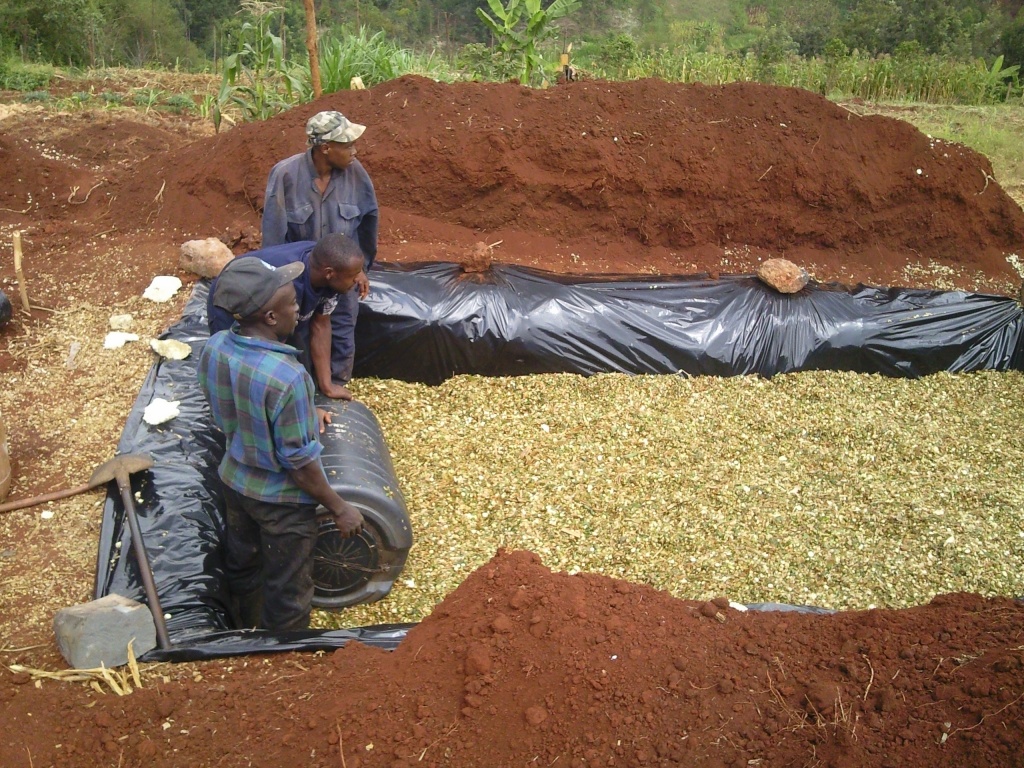As the dry season looms between January and April, farmers need to plan early to ensure their animals have adequate feed during the period. According to Samuel Tangus, a Dairy Researcher Officer at Kenya Agricultural and Livestock Research Organization farmers should prepare silage from excess forage when it is still green and of good quality.
"It is important for farmers to ascertain extra diets that can improve on their livestock health and enhance milk production" says Tangus.
Related article: Polythene bag silage technology for increased milk yield
Smallholder farmers in Kenya face many challenges during the dry season due to dwindling feed for their animals. Farmers usually lack good quality feed that can enhance milk production as their animals depend on various grasses which are only available in abundance during the wet season. As such, poor feeding leads to poor health and low milk production hence farmers get low income from their livestock.
According to a report by the Kenya National Bureau of Statistics, milk production dropped by 17.5 per cent in the first five months of 2017 forcing the government to allow tax-exempt milk powder imports to stabilise prices. The report further indicates that 215.9 million litres were sold to processors between January and May compared to 261.9 million litres in a similar period in 2016. In order to curb this and ensure there is enough milk supply in 2018, farmers can make silage using the surplus forage.
Related article: Farmers make silage from sweet potato vines
Step one
Prepare a shallow pit, preferably on slightly sloping ground. The depth of the pit should decrease from the higher side of the sloping ground to the lower side giving a wedge-like shape. Dimensions of the pit depend on the amount of forage to be stored. 72 cubic feet (2 cubic metres) holds 1000 kg (or 20 bags) of fresh, chopped material. This requires 2030 liters of molasses and 10 meters of polythene sheeting.
Molasses is an important ingredient on dairy farms as it is used to provide sugar to animals, improve palatability of feed rations and is used in silage making to aid in fermentation.
A 20 kg liter can of molasses in Kenya retails at an average of Sh.300- 500 depending on the location while polythene bags cost about Sh 110 per meter.

Step two
Chop the forage to be ensiled to lengths of about 1 inch tong using either a panga or a chaff cutter.
Step three
Place polythene sheeting over the sides and floor of the pit so that the forage does not come into contact with soil.
Step four
Empty 1 bag of about 50 kg of chopped material into the plastic lined pit and spread into a thin layer. Repeat this till the pit is filled to 1/3 (6 bags).
Step five
Dilute 1 liter of molasses (that is about 1 kg Kasuku tin full) with 3 liters (3 Kasuku tins) of water. Sprinkle this mixture over the layer of chopped forage. Use a garden sprayer to distribute the solution evenly. This helps to feed the micro-organisms to make the silage acid quickly, which will prevent rotting.
Step six
Press the forage down with your feet or a suitable weight (e.g. a drum full of water) to force out as much air as possible. This will prevent fungi attacking and destroying the forage.
Step seven
Add another bag of the chopped feed, sprinkle diluted molasses and compact the forage again. Repeat this process of adding forage, diluted molasses and compacting until the pit filled is in a doom shape.
Step eight
Cover the pit after a final pressing with polythene sheeting to prevent water seeping into the silage and dig a small trench around the sides of the pit.
Step nine
Then, cover the pit with soil: a layer of 24 inches (in the case of wet, fresh fodder) up to 36 inches (in the case of more dry forage) of soil to keep the air out and to prevent damage of the polythene by rain, birds and rodents.
Step 10
The conservation of the material by microorganisms takes a couple of weeks. Thereafter, it can be fed, but you better leave it until a time of feed shortage. With good sheeting and enough soil on it, the silage can be kept well for 1 - 2 years.
Step 11
Open the pit from the lower side of the slope. Remove enough material for one day's feeding, and then cover the open end again. A grade cow may eat up to 30 kg of silage per day. To ensure that the milk has no silage smell, feed after milking or at least 3 hours before milking. Silage offers a store of feed for the dry season. It ensures that animals remain in good condition; farmers get more milk at a better price thus more income in the dry season.
Related article: Molasses secures livestock silage for over a year for farmers
For more information on polythene sheets farmers can Contact GREKKON LIMITED | RHAPTA ROAD, WESTLANDS | Tel: +254 735962626 | Email: This email address is being protected from spambots. You need JavaScript enabled to view it.
















Comments powered by CComment